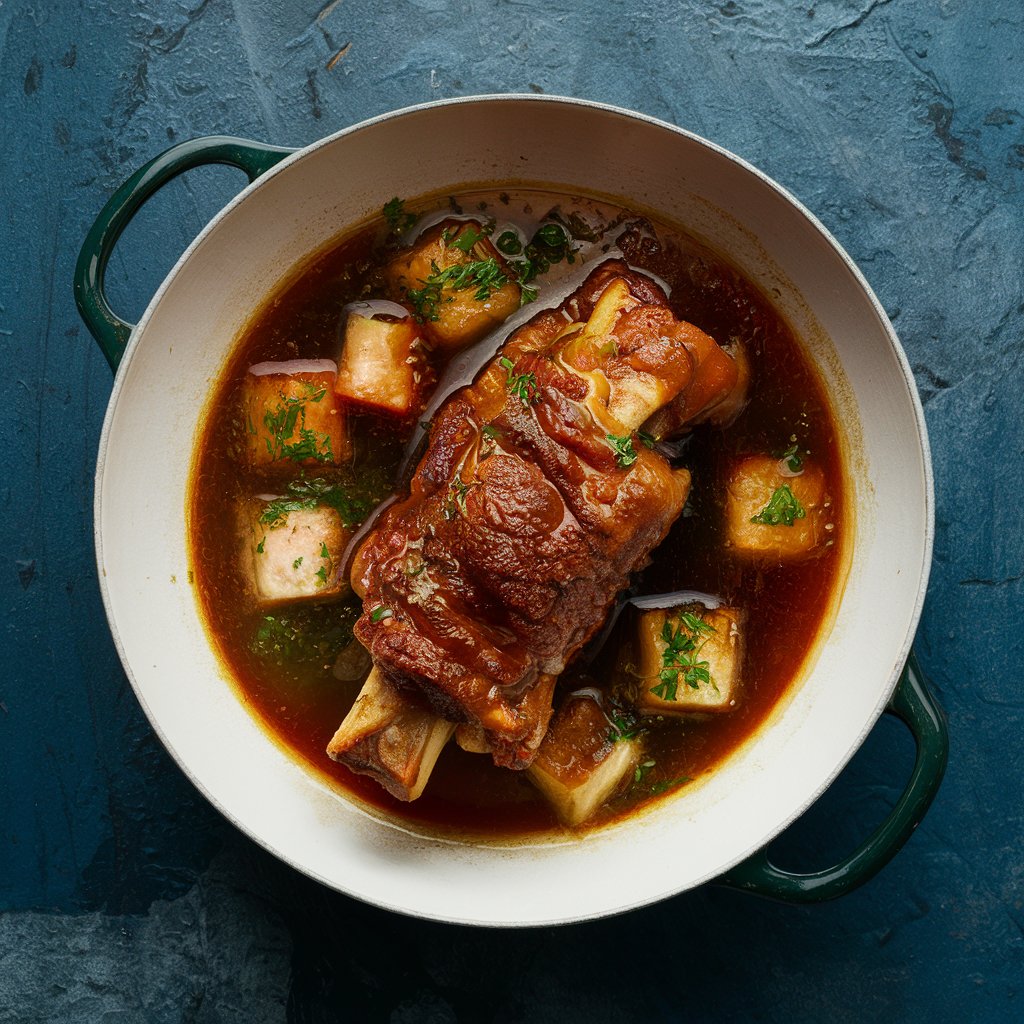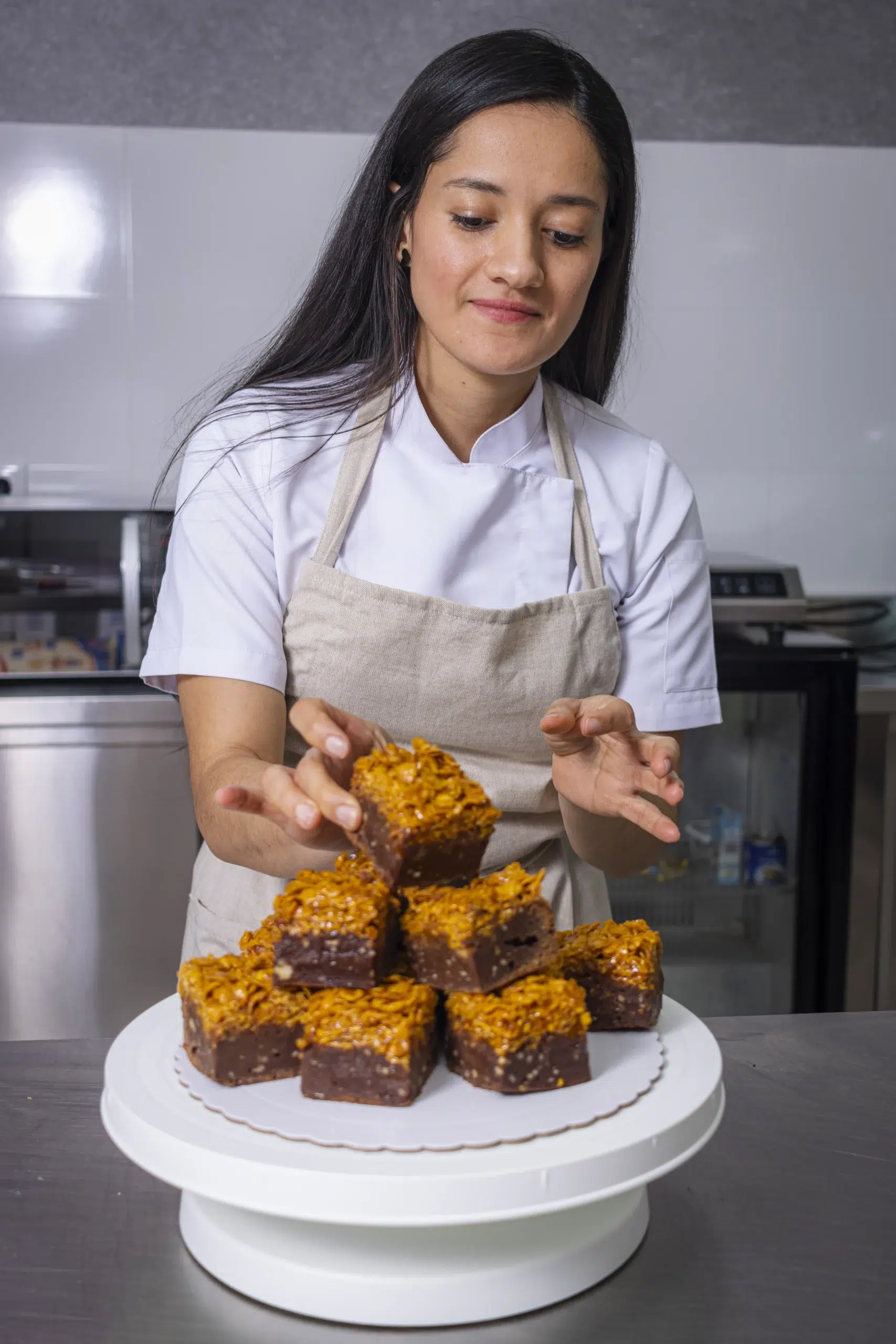Introduction to Cooking Shanks
What are Shanks?
Shanks come from the lower leg of an animal, typically beef, lamb, or pork. Known for their rich flavor and tough texture, shanks need special cooking methods to become tender. Muscle and connective tissue surround these cuts, making them ideal for slow cooking methods that break down the fibers and enhance the meat’s natural flavors. Which cooking method is best for the shanks?
Types of Shanks
Choosing the right type of cutter is pivotal for your dish. Then are the three most common types
Beef Shank
Beef shank is the most common and can be found at most butchers and grocery stores. It has a strong, robust flavor and is ideal for braising and slow cooking. This cut often appears in hearty stews and soups, providing a rich, beefy taste that’s hard to beat. For more information on cooking beef shank, check out this guide.
Lamb Shank
Lamb shank is smaller and more delicate than beef shank, with a slightly milder flavor. It’s perfect for dishes that require a tender, fall-off-the-bone texture. Lamb shanks often cook with aromatic herbs and spices to enhance their natural sweetness and are a staple in many Mediterranean and Middle Eastern cuisines.
Nutritional Value of Shanks
Shanks are not only flavorful but also packed with nutrients. They provide a great source of protein, iron, and essential minerals. The bone marrow inside the shank bones is rich in collagen, which benefits joint health and skin elasticity. When you slow-cook shanks, these nutrients seep into the cooking liquid, creating a nutritious and hearty meal.
By understanding what shanks are and the different types available, you’re already on your way to mastering the art of cooking this underrated cut. Next, we’ll delve into the most popular cooking methods and discover which is best for making shanks tender and delicious. Stay tuned!
Popular Cooking Methods for Shanks
Braising Shanks
Braising is a classic method that turns tough shanks into tender, flavorful delights. This method involves searing the meat at high heat and then slowly cooking it in a liquid. Consequently, the connective tissues break down, and the shank becomes fork-tender.
Step-by-Step Guide to Braising Shanks
- Preparation: Pat the shanks dry and season them with salt and pepper. This initial step ensures that the meat browns properly.
- Searing: Heat some oil in a heavy-bottomed pot. Sear the shanks on all sides until they develop a rich, brown crust.
- Building Flavor: Remove the shanks and sauté onions, garlic, and other aromatic vegetables in the same pot. This step adds depth to your dish.
- Adding Liquid: Return the shanks to the pot and add your choice of broth or stock. The liquid should cover about three- diggings of the cutter.
- Slow Cooking: Bring the liquid to a boil, then reduce to a simmer. Cover the pot and let it cook for several hours until the meat is tender.
Pros and Cons of Braising
- Pros:
- Infuses the meat with rich flavors.
- Results in tender, juicy shanks.
- Versatile, allowing for various flavor profiles.
- Cons:
- Takes several hours.
- Requires attention to ensure the liquid doesn’t dry out.

Slow Cooking Shanks
Slow cooking is perfect for busy days when you want a hands-off approach. This method ensures that the shanks cook evenly and become melt-in-your-mouth tender.
Step-by-Step Guide to Slow Cooking Shanks
- Seasoning: Season the shanks with your favorite spices and herbs.
- Layering: Place the shanks in a slow cooker along with vegetables, such as carrots, onions, and celery.
- Adding Liquid: Pour in broth or stock to cover the ingredients.
- Cooking: Set the slow cooker on low heat and cook for 6 to 8 hours, or until the shanks are tender.
Pros and Cons of Slow Cooking
- Pros:
- Very convenient.
- Enhances the flavors of the shank and vegetables.
- Minimal effort required.
- Cons:
- Requires a long cooking time.
- Limited to dishes that benefit from slow cooking.
Roasting Shanks
Roasting shanks can give them a crispy exterior while keeping the inside moist and tender. This method is excellent for those who enjoy a bit of texture contrast in their meat.
Step-by-Step Guide to Roasting Shanks
- Prepping: Preheat your oven to 350°F (175°C). Season the shanks with salt, pepper, and your favorite herbs.
- Browning: In a hot skillet, sear the shanks on all sides to lock in the juices.
- Roasting: Transfer the shanks to a roasting pan and cook in the oven for about 1.5 to 2 hours. Use a meat thermometer to ensure the internal temperature reaches 160°F (71°C).
- Resting: Let the shanks rest for a few minutes before slicing to allow the juices to redistribute.
Pros and Cons of Roasting
- Pros:
- Results in a flavorful, crispy exterior.
- Can be cooked relatively quickly compared to other methods.
- Cons:
- Requires careful temperature control to prevent drying out.
- Needs attention to avoid overcooking.
For further details, check out this comprehensive guide on which cooking method is best for shank.
Alternative Cooking Methods for Shanks
Pressure Cooking Shanks
Pressure cooking is a fantastic method if you’re short on time but still want tender, flavorful shanks. This technique uses high pressure to cook the meat quickly while retaining moisture and nutrients.
Step-by-Step Guide to Pressure Cooking Shanks
- Preparation: Season the shanks with salt, pepper, and your preferred herbs.
- Searing: In the pressure cooker, heat some oil and sear the shanks on all sides until they are browned.
- Adding Ingredients: Add chopped onions, garlic, and other vegetables to the cooker. Pour in broth or stock until it covers the shanks halfway.
- Cooking: Secure the lid and set the cooker to high pressure. Cook for about 45 minutes to 1 hour.
- Releasing Pressure: Allow the pressure to release naturally before opening the lid. Check the tenderness of the meat and cook a bit longer if needed.
Pros and Cons of Pressure Cooking
- Pros:
- Significantly reduces cooking time.
- Retains nutrients and flavors.
- Convenient for quick meals.
- Cons:
- Requires a pressure cooker.
- Risk of overcooking if not monitored.
Sous Vide Cooking Shanks
Sous vide cooking involves sealing the shanks in a vacuum bag and cooking them in a water bath at a precise, controlled temperature. This method ensures the meat is cooked evenly and retains its moisture.
Step-by-Step Guide to Sous Vide Cooking Shanks
- Seasoning: Season the shanks with salt, pepper, and herbs. Place them in vacuum-sealed bags.
- Setting Up: Preheat the sous vide water bath to 165°F (74°C).
- Cooking: Submerge the bags in the water bath and cook for 24 to 48 hours. The longer cooking time allows the tough fibers to break down, resulting in ultra-tender meat.
- Finishing: After cooking, remove the shanks from the bags and sear them in a hot pan to develop a crust before serving.
Pros and Cons of Sous Vide
- Pros:
- Ensures precise and consistent cooking.
- Retains moisture and flavor.
- Very tender results.
- Cons:
- Requires special outfit( sous vide machine and vacuum sealer)..
- Long cooking time.
By exploring these alternative methods, you can find the perfect way to cook shanks to your liking. Each technique offers unique benefits and flavors, allowing you to experiment and enjoy this versatile cut of meat.
Best Recipes and Serving Suggestions
Best Recipes for Cooking Shanks
Cooking Cutters can be incredibly satisfying when you follow the right fashions. Then are some of the stylish fashions to try :
Braised Beef Shank with Vegetables
This recipe involves slow-cooking beef shanks with hearty vegetables, creating a rich and flavorful dish.
Slow Cooked Lamb Shank in Broth
Lamb shanks cooked in broth with aromatic herbs result in tender, juicy meat that falls off the bone.
Serving Suggestions
Pairing shanks with the right sides can elevate your meal to the next level. Here are some ideas:
Creamy Mashed Potatoes
Mashed potatoes provide a creamy, comforting base that complements the rich flavors of shanks.
Roasted Vegetables
Roasted vegetables like carrots, parsnips, and Brussels sprouts add a touch of sweetness and texture.
Polenta
Creamy polenta offers a deliciously smooth contrast to the tender meat.

Frequently Asked Questions
What is the best way to cook shanks?
The best way to cook shanks depends on your preference for texture and flavor. Braising, slow cooking, and roasting are all excellent methods that tenderize the meat and bring out its natural flavors.
How long should shanks be cooked?
Cooking time varies based on the method. Braising and slow cooking typically take several hours, while pressure cooking can be done in under an hour. Always ensure the meat is fork-tender before serving.
Can you cook shanks in a slow cooker?
Yes, shanks cook wonderfully in a slow cooker. This method allows the meat to become incredibly tender and flavorful over several hours.
What are the best seasonings for shanks?
Seasonings such as garlic, rosemary, thyme, bay leaves, and pepper work well with shanks. The key is to complement the rich, hearty flavor of the meat without overpowering it.
Tips for Perfecting Shank Dishes
Selecting the Best Shanks
Choosing high-quality shanks is crucial for achieving the best results. Here are some tips:
Look for Marbling
Marbling refers to the fat interspersed within the muscle. Shanks with good marbling will be more flavorful and tender.
Check for Freshness
Ensure the shanks are fresh by checking the color and smell. Fresh shanks should have a bright, vibrant color and a clean, neutral smell.
Preparation Tips
Proper preparation can make a significant difference in the final dish.
Trimming Excess Fat
Trim any excess fat or silver skin from the shanks. This helps in even cooking and prevents the meat from becoming tough.
Seasoning Well
Don’t skimp on seasoning. Generously season the shanks with salt, pepper, and your choice of herbs to enhance the natural flavors.
Cooking Tips
Follow these tips to ensure your shank dishes turn out perfect every time.
Maintain Low and Slow Heat
For methods like braising and slow cooking, maintaining a low temperature over a long period is key to breaking down the tough fibers and achieving tender meat.
Use Enough Liquid
Ensure there’s enough liquid to cover at least half of the shanks during cooking. This keeps the meat moist and allows it to absorb the flavors.
Serving and Presentation
A beautifully presented dish can elevate your dining experience.
Resting the Meat
Let the cutters rest for a many twinkles after cuisine. This allows the authorities to redistribute, making the meat more succulent.
Garnishing
Add a touch of freshness with garnishes like chopped herbs, a squeeze of lemon juice, or a sprinkle of zest. It brightens the flavors and adds visual appeal.
Storage and Reheating
Proper storage and reheating can ensure your leftovers are just as enjoyable as the fresh dish.
Storing Leftovers
Store leftover shanks in an airtight container in the refrigerator for up to five days. For longer storage, freeze the meat in a shallow container for up to two months.
Reheating Tips
Reheat shanks gently in the microwave or a small saucepan to avoid drying out the meat. Adding a bit of broth or cooking liquid can help maintain moisture.
Cooking shanks can seem daunting at first, but with the right techniques and a bit of patience, you can transform this tough cut into a culinary masterpiece. Whether you prefer Braising, slow cooking, roasting, or experimenting with pressure cooking and sous vide, there’s a method that suits your taste and schedule. By understanding the different types of shanks, preparing them properly, and choosing the best cooking method, you’ll enjoy rich, flavorful, and tender shank dishes every time.
Don’t forget to pair your shanks with complementary sides like creamy mashed potatoes, roasted vegetables, or polenta to create a well-rounded meal. And with the additional tips for selecting, preparing, and storing shanks, you’ll be well-equipped to make the most of this underrated cut.
So, embrace the journey of cooking shanks, and enjoy the rewarding experience of turning a humble cut of meat into a star dish on your table. Happy cooking! Which cooking method is best for the shanks?










